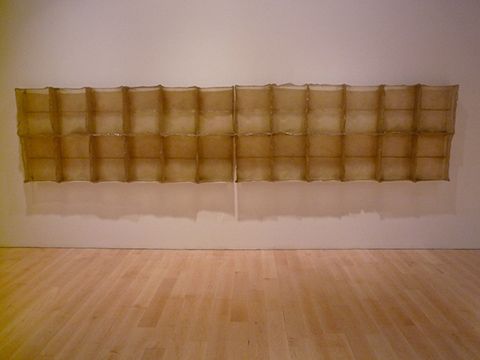Eva Hesse

Eva Hesse was one of the most influential minimalist artists of her time, known for her revolutionary use of space and material. Hesse also survived myriad traumas, escaping the Holocaust on a Kindertransport. Hesse recalled and acknowledged these generations of trauma, as Jews do on the Passover Seder, through her art. A prime example is “Sans II” (1968). She created simplistic sculptures that suggest chaos underneath, reflecting the emotional turmoil she and others underwent. There is an inherent tension between order and chaos in this work, as the outward grid shape is contained and structured in contrast to the delicate world of texture and imperfection visible underneath the translucent fiberglass. The internal texture may represent the inner turmoil produced by centuries of trauma, as the fibers appear vulnerable in their fragility and confusing in their pattern. These imperfections are placed under a seemingly methodical, translucent grid, allowing the viewers to only barely see this chaos underneath the order.1
Credits
1. Contemporary Jewish Art and the Celebration of Passover
by Zimra Chickering Mar 24, 2021, (emorywheel.com)
